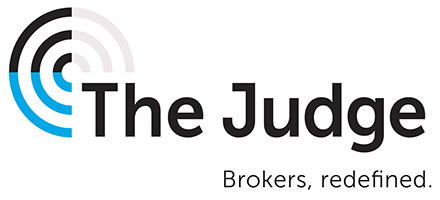As third-party funding becomes increasingly mainstream, this article highlights the importance of considering both funding and insurance when looking for a cost-effective way to manage legal spend
There has been a lot of hype about the increased use of third-party funding by companies keen to manage the rising cost of arbitration. Funders are attracted to the arbitration arena by the high-value claims, perceived finality of awards and the enforcement regime provided by the New York Convention. In return, the arbitration community has shown its support by adopting it as a common cost tool encouraged, perhaps, by jurisdictions such as Singapore and Hong Kong lifting their prohibition of its use in arbitrations.
As the market has developed, funding options have become increasingly diverse to suit small and large businesses seeking case-specific funding, portfolio finance for multiple arbitrations or the monetisation of their claim. Understanding market dynamics is important. For example, the likely funder selection to monetise a $1bn award will be very different to a pool of funders competing to finance cases needing $1m-$4m investments.
There is little doubt that the industry’s global growth has had a significant impact on how high-value arbitrations are financed, and many practitioners are now familiar with the process of obtaining funding and the benefits it can provide. But there is far less awareness of the important role legal-expense insurance can play alongside, or as an alternative to, funding in international arbitration. While funding has the benefit of aiding cash flow, insurance often provides a more flexible and cost-effective route to cost certainty where cash flow is not the primary concern. Understanding the full breadth of the options available, how they can work together and how they impact the net recovery of a dispute is vital if lawyers and clients are to make informed decisions about the most commercial way to fund their dispute.
Legal-expenses insurance is often associated with cover for adverse costs and own disbursements. However, cover is also available for a percentage of a client’s own fees. In its simplest form, the policy reimburses the client (or the law firm if the lawyer is acting on a deferred-fee arrangement) for the agreed percentage of their fees in the event their case is unsuccessful. If successful (and often only if), the insurer receives a premium. Chief financial officers can, therefore, have greater certainty over their legal-cost exposure by insuring an agreed portion of their overall budget against an unsuccessful outcome. Because the insurer does not fund the fees during the life of the case, but is instead providing an indemnity against loss, the insurer’s premium rate is usually significantly less than a funder’s success fee, which means a greater net recovery by the client.
‘While funding has the benefit of aiding cash flow, insurance often provides a more flexible and cost-effective route to cost certainty.’
Alternatively, insurance can be tailored to indemnify the lawyer for a percentage of their fees when engaged under a contingency or damages-based agreement. This form of insurance is called work-in-progress (WIP) insurance and has been designed to enable lawyers to offer success-fee arrangements to their clients while ensuring the law firm receives an agreed fee income regardless of the outcome of the case. Many lawyers will have encountered cases that would have been perfect for a contingency fee. However, the economic reality of risking their full fees is often too much for the firm to bear. With WIP insurance, if the case is lost, the insurer reimburses the law firm for an agreed portion of the fees incurred, typically 50%. If the case is successful and the firm recovers its contingency fee, the law firm pays the insurer a premium. Again, the premium is usually significantly less than a typical funder’s fee. It is worth noting that insurers will usually cover the risk of a paper judgment and, if there is a shortfall between the costs outlay and recovery, the insurer will pay the difference, thereby ensuring the law firm has recovered its agreed fees before any premium is paid.
WIP insurance, therefore, provides law firms with the comfort needed to offer contingency-fee agreements in return for a share of the award in a successful arbitration. It can sit alongside funding for disbursements or can be used to underpin a finance arrangement if the law firm prefers to receive some cash flow during the life of the case.
Of course, a client’s costs in an arbitration only paint half of the picture. There has been a marked increase in the willingness of tribunals to award adverse costs to the successful party. Consequently, there has also been an increase in security-for-costs applications by respondents wanting the applicant to prove they can meet an adverse-cost order should one be made. It is imperative that arbitration practitioners and their clients consider at the outset the potential risks of either a security-for-costs application or an adverse-cost award following an unsuccessful outcome in the case.
Adverse-cost insurance is a key tool to remove the adverse-cost risk of an arbitration in a cost-effective manner and case law suggests its existence can be sufficient to withstand a security-for-costs application. In Eskosol SpA v Italian Republic (ICSID Case No ARB/15/50), it appears the key argument that shaped the tribunal’s decision not to allow security was the fact that Eskosol had in place appropriate adverse-costs cover brokered by TheJudge. While the Eskosol decision was based on its own facts, it is a prime example of why international arbitration practitioners need to think carefully about the advice they are providing their clients regarding the risk of security for costs and adverse costs exposure. While some third-party funders will provide this additional protection as part of their overall funding arrangement, it will rarely, if ever, be as cost effective as using an insurance policy with a large, A-rated insurer.
‘WIP insurance provides law firms with the comfort needed to offer contingency-fee agreements in return for a share of the award.’
While third-party funding is undoubtedly a helpful solution for clients requiring cash flow to fund their arbitration, the use of insurance alongside, or instead of, funding can offer a more cost-effective way to manage the legal spend and can maximise fee realisation for the law firm while ensuring the client retains more of the award.
About TheJudge
Far more than ‘just a broker’ in the traditional sense, we operate exclusively in the world of funding and insurance for disputes. As an independent broker working with over 30 funders and insurers, and with offices in London, Manchester, New York, California and Toronto, we are one of the most connected and experienced teams in this highly-specialised market.
Our work is diverse, whether engaged by a small business that requires £500,000 of funding, a large corporate seeking a £60m portfolio arrangement, or a law firm looking to expand their contingency-fee work using tools that can guarantee a minimum realisation rate on fees. We search multiple markets simultaneously to source and structure the most appropriate products and to secure the best terms.
We do not charge an upfront fee for our service. We are paid by the selected funder or insurer on a contingent-commission basis ensuring that our interests are aligned to the outcome of the case. Start your exploration of this market with us and you will not only save time but gain peace of mind. By having the various products and the impact of different pricing models explained to you from the outset, you will be achieving your objective in the most efficient way possible, within the fastest timeframe.

Verity Jackson-Grant, director of business development, TheJudge















